
The Australian Bureau of Statistics (ABS) has released labour force data for the month of December, which reported a seasonally-adjusted rise in the headline unemployment rate to 5.4% from 5.3% in October (revised upwards from 5.2%), as well as a fall in the total number of jobs across the economy.

The economy shed -5,500 (-0.0%) jobs over the month, with the loss of -13,800 full-time jobs partly offset by a 8,300 increase in part-time jobs. The labour force participation rate also dipped ever so slightly (see below charts).
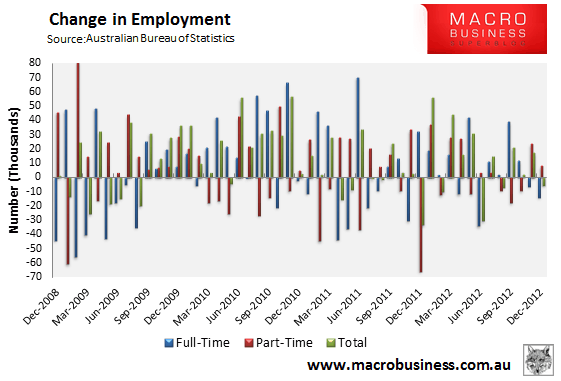
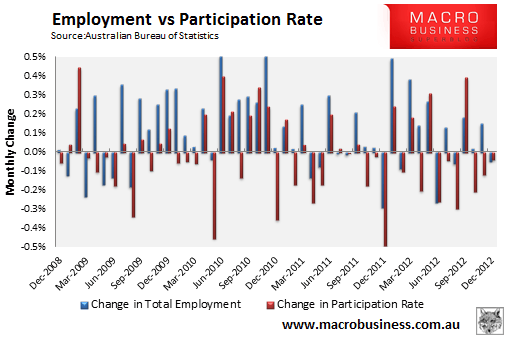
Total employment has been effectively flat since May:
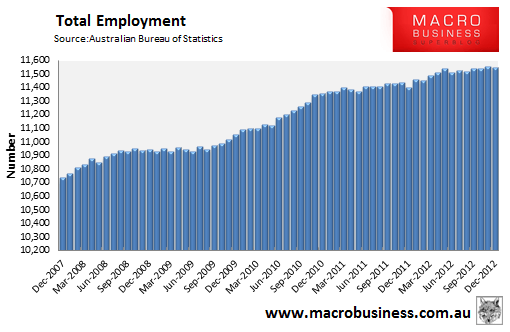
And jobs growth was mixed across states in December, with losses in the mining states (mostly Queensland) more than offset job creation in the non-mining states:
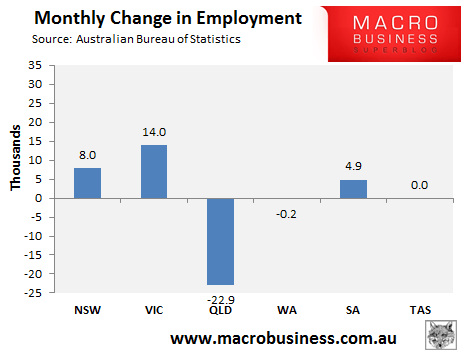
Australia’s employment market is also no longer two speed, with New South Wales and Victoria stepping into the fold. Queensland, however, continues to struggle:
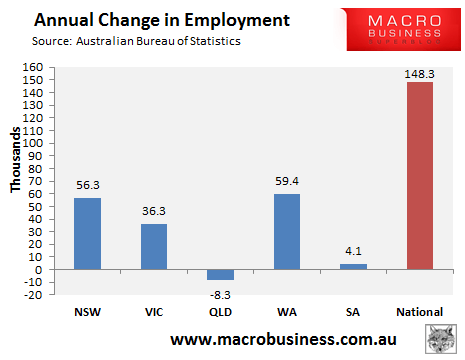
Western Australia’s unemployment rate remains the lowest of any mainland state, however, with New South Wales’ unemployment rate also holding-up well. By contrast, unemployment in Queensland and Tasmania remains relatively high:
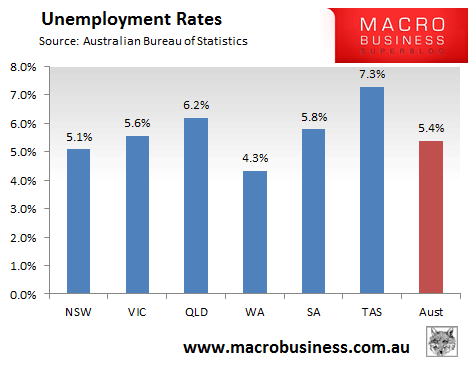
Growth in the aggregate number of hours worked fell -1.1% nationally in December and was basically flat (+0.1%) over the year:
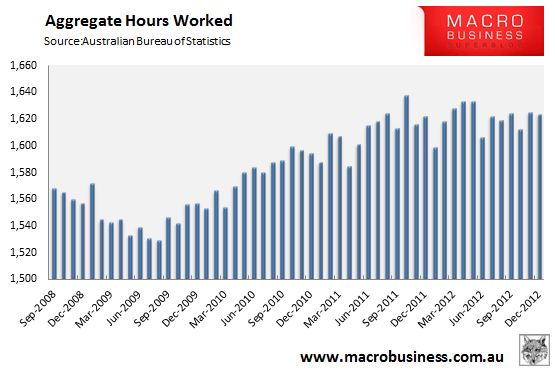
At the state level, annual growth in the aggregate number of hours worked was positive in Western Australia and New South Wales, but negative in the other mainland states:
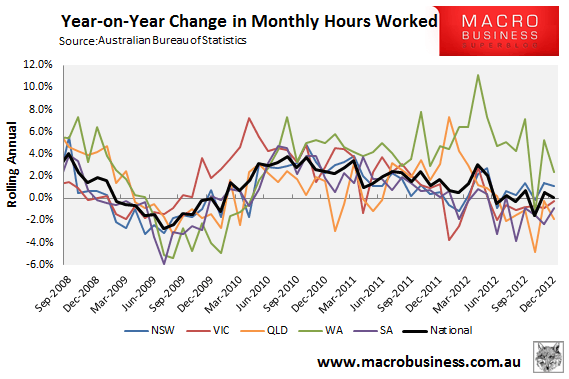
The employment-to-population ratio fell further in December, down -0.2% to 61.5%, and remains in a clear down-trend:
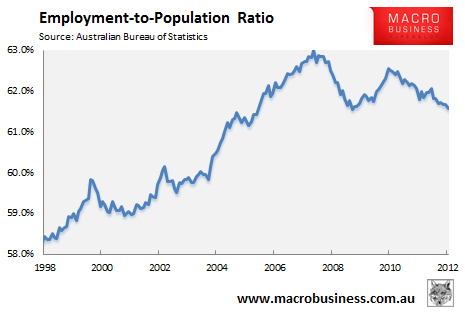
Finally, the below chart summarises the annual change in the key employment aggregates:
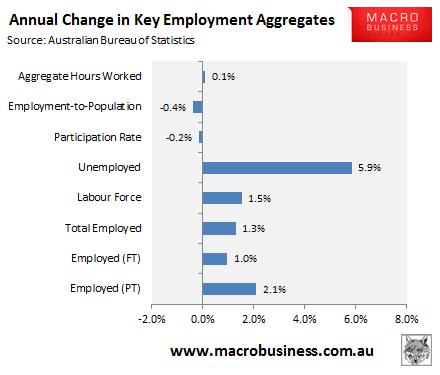
Overall, it’s a lukewarm employment release, with full-time jobs contracting by a significant amount, aggregate hours worked falling, and the employment-to-population ratio continuing to slide. One bright spot, however, is the continued shift away in jobs creation from Western Australia to New South Wales and Victoria, suggesting the jobs market is becoming more balanced.

